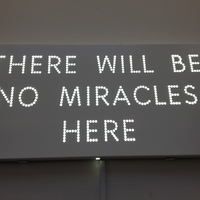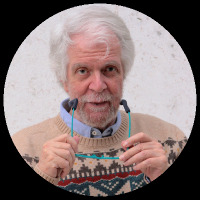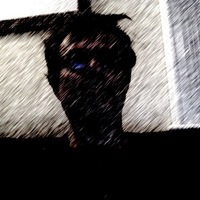Papers by Rosa te Velde
Kunstlicht, Breaking the Frame, Subversion from Within, 2017
"In recent years, Kaersenhout has gained recognition from the Dutch and international art field. ... more "In recent years, Kaersenhout has gained recognition from the Dutch and international art field. A solo exhibition at the Stedelijk Museum, however, remains unthinkable. Yet does she want to be included in this white cube? Her performance The Clean Up Woman at the Stedelijk Museum Amsterdam in 2016, forcefully called out the institution for its own color blindness. [...] In order to be part of this institution as a person of color, one may obtain a service job there either as a security guard or as a cleaner, a role Kaersenhout enacts in her performance. Still, as the performance highlights, such service workers remain invisible; friends and colleagues that were present simply failed to recognize her. Or better put, they looked right through her. One who cleans is part of the interior."

Kunstlicht, Breaking the Frame, Subversion from Within, 2017
To celebrate Finland’s independence centenary, the Finnish Cultural Institute for the Benelux in ... more To celebrate Finland’s independence centenary, the Finnish Cultural Institute for the Benelux in Brussels has commissioned a controversial work from the artist Anssi Pulkkinen. Pulkkinen has proposed to relocate and reassemble the ruins of a Syrian house, to be presented on a stage that will take the form of a truck bed. The house will tour through the Benelux and Northern Europe in the summer of 2017. In this article, Rosa te Velde discusses the context of the work and the ethics involved therein, seeking to understand how such a commission fits into a wave of art dealing with the pressing topic of the refugee crisis, and how it connects to the agenda of the institute and Finland’s centenary. What does it mean to commission a ‘provocative’ work in an institutional context for the occasion of celebrating a country’s centenary?
Editorial of 'Constructed Identities', an issue of Kunstlicht (no. 2, 2016) on identity politics ... more Editorial of 'Constructed Identities', an issue of Kunstlicht (no. 2, 2016) on identity politics and architectural heritage.

This paper aims to reveal how the complex relationship between design and national identities has... more This paper aims to reveal how the complex relationship between design and national identities has been established in Finland, in
particular in the case of the Ultima Thule glasses. Finnish national identity in the second half of the 19th century was actively constructed through various cultural expressions.
Despite a heterogeneous culture, strong stereotypes of Finnishness were spread around, and cultural heritage from specific regions was selectively adapted and actively instrumentalized as ‘Finnish’. During the 1950s some of these stereotypes and imagery of Finnish nature were employed in order to promote Finnish design abroad. The Ultima Thule glassware has become an immensely successful product from the time of its launch in 1969 and can be found in many Finnish households. Interestingly, the design can be considered a
visual exception to many of the other well known Finnish design classics. This confirms the idea that there is no fixed national identity, but rather a continuous rhetoric of Finnishness which is malleable to different cultural expressions throughout history.
Books by Rosa te Velde
MoMoWo - 100 Works in 100 Years. European Women in Architecture and Design. 1918-2018
Interviews by Rosa te Velde
Kunstlicht journal for visual art, visual culture, and architecture, 2018
Book Reviews by Rosa te Velde
Book review of Netherlands ⇄ Bauhaus. Pioneers of a New World
Journal of Design History, 2022
"The catalog could have questioned and contextualized the relevance of the modernist pedagogies a... more "The catalog could have questioned and contextualized the relevance of the modernist pedagogies and visions in a broader, cultural, political, and social context and its ongoing effects on design education and design values today. We may pose that diligently enumerating the inside-knowledge of an exclusive network that was determined to define and disseminate the universalist ideals that promised to give access to ‘the good life’ through design ‘around the world’, only intensifies the stronghold of modernist design and erects another monument. Cultural treasures, as Benjamin wrote, should always be viewed with ‘cautious detachment."











Uploads
Papers by Rosa te Velde
particular in the case of the Ultima Thule glasses. Finnish national identity in the second half of the 19th century was actively constructed through various cultural expressions.
Despite a heterogeneous culture, strong stereotypes of Finnishness were spread around, and cultural heritage from specific regions was selectively adapted and actively instrumentalized as ‘Finnish’. During the 1950s some of these stereotypes and imagery of Finnish nature were employed in order to promote Finnish design abroad. The Ultima Thule glassware has become an immensely successful product from the time of its launch in 1969 and can be found in many Finnish households. Interestingly, the design can be considered a
visual exception to many of the other well known Finnish design classics. This confirms the idea that there is no fixed national identity, but rather a continuous rhetoric of Finnishness which is malleable to different cultural expressions throughout history.
Books by Rosa te Velde
Interviews by Rosa te Velde
Book Reviews by Rosa te Velde
particular in the case of the Ultima Thule glasses. Finnish national identity in the second half of the 19th century was actively constructed through various cultural expressions.
Despite a heterogeneous culture, strong stereotypes of Finnishness were spread around, and cultural heritage from specific regions was selectively adapted and actively instrumentalized as ‘Finnish’. During the 1950s some of these stereotypes and imagery of Finnish nature were employed in order to promote Finnish design abroad. The Ultima Thule glassware has become an immensely successful product from the time of its launch in 1969 and can be found in many Finnish households. Interestingly, the design can be considered a
visual exception to many of the other well known Finnish design classics. This confirms the idea that there is no fixed national identity, but rather a continuous rhetoric of Finnishness which is malleable to different cultural expressions throughout history.